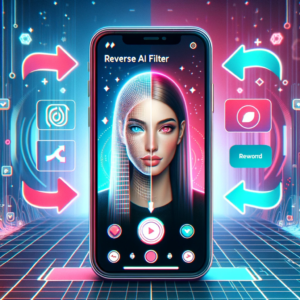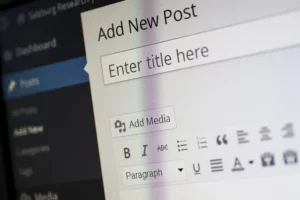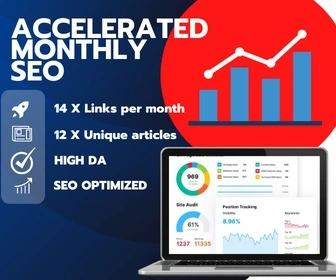Fashion marketing stands at the crossroads of creativity and commerce, embodying the pulse of the global fashion industry. This guide is crafted for fashion brands and marketers aiming to navigate the complex landscape of modern marketing with finesse and strategic insight. In an era where consumer preferences shift as quickly as trends on the runway, understanding how to effectively market your fashion brand is paramount. This fashion marketing guide tells you all about the most essential marketing strategies and tactics that the world’s leading fashion brands employ to captivate audiences, drive sales, and build a lasting legacy in the competitive fashion industry.
SUGGESTED: As a fashion marketing agency, we have a generic multi-channel digital marketing plan which runs monthly. It covers the majority of the tactics mentioned below. However below, we will also provide guidance on how to use these channels as a stand-alone option.
The distinction between B2B (Business-to-Business) and B2C (Business-to-Consumer) marketing in fashion is critical, with each approach requiring a nuanced understanding and implementation of specific tactics. B2B marketing focuses on building valuable relationships and networks within the industry, from wholesalers to retailers, and emphasizes the importance of strategic partnerships, bulk sales, and brand positioning within the market. Conversely, B2C marketing aims directly at the end consumer, focusing on emotional engagement, brand loyalty, and direct sales channels. The complexity of B2B marketing introduces additional tactics, such as LinkedIn networking, trade shows participation, and targeted content marketing, to effectively reach and engage business clients.
Leading the charge in utilizing these complexly crafted marketing strategies are some of the world’s biggest fashion brands, including Louis Vuitton, Chanel, Gucci, Hermes, and Prada. These iconic brands leverage a mix of traditional and digital marketing tactics, from awe-inspiring fashion shows and influencer collaborations to cutting-edge SEO strategies and engaging social media campaigns. Their success underscores the effectiveness of a well-rounded marketing approach that caters to both B2B and B2C segments, ensuring comprehensive market penetration and brand resonance.
Here are the 9 Best Fashion Marketing Methods To Inlcude In Your Strategy:
1. Achieving Mass Awareness: NewsPass, Branded Content & Press
SUGGESTED TOOL: Get NewsPass
Utilizing NewsPass for your fashion brand’s press releases is a strategic move to gain mass awareness in a competitive market. This platform offers a unique opportunity to distribute your news directly to a wide audience, including journalists, bloggers, and consumers who are actively interested in fashion. The key advantage of NewsPass lies in its ability to ensure your content reaches its target audience without the risk of being diluted among countless other press releases.
AVOID HARMFUL PR DUPLICATION:
To avoid SEO penalties associated with duplicate content, it’s crucial to craft press releases that are not only engaging but also unique. Duplicate content can significantly harm your search engine rankings, making it harder for potential customers to find you. When using NewsPass, focus on creating compelling narratives about your brand or products that highlight what sets you apart. Use fresh insights, upcoming trends, or behind-the-scenes looks to capture the audience’s interest and encourage sharing, which in turn amplifies your reach.
2. SEO Mastery for Fashion Brands
SUGGESTED: Read our full SEO guide here
SEO is the backbone of any successful online marketing strategy, especially for fashion brands where visibility in search results can make or break your business. Start with on-site optimization by ensuring your website’s content is both informative and keyword-rich. However, avoid keyword stuffing; instead, integrate keywords naturally into product descriptions, blog posts, and meta tags.
Visual content plays a significant role in fashion marketing. High-quality images and videos not only enhance the user experience but also contribute to SEO. Use alt tags to describe images, focusing on relevant keywords to improve your site’s visibility.
Technical SEO, such as improving site speed, ensuring mobile-friendliness, and implementing schema markup, is essential for making your website easily accessible to both users and search engines.
Off-site SEO strategies, including acquiring quality backlinks from reputable sites and leveraging social media platforms, are crucial for building your brand’s authority and online presence. Engage in guest blogging, collaborate with influencers, and actively participate in fashion forums to generate backlinks.
Blogging with purpose involves creating content that resonates with your audience while incorporating SEO best practices. Cover topics like seasonal trends, styling tips, and fashion news, using keywords strategically to attract organic traffic.
3. Pay-Per-Click (PPC) Marketing
SUGGESTED RESOURCES:
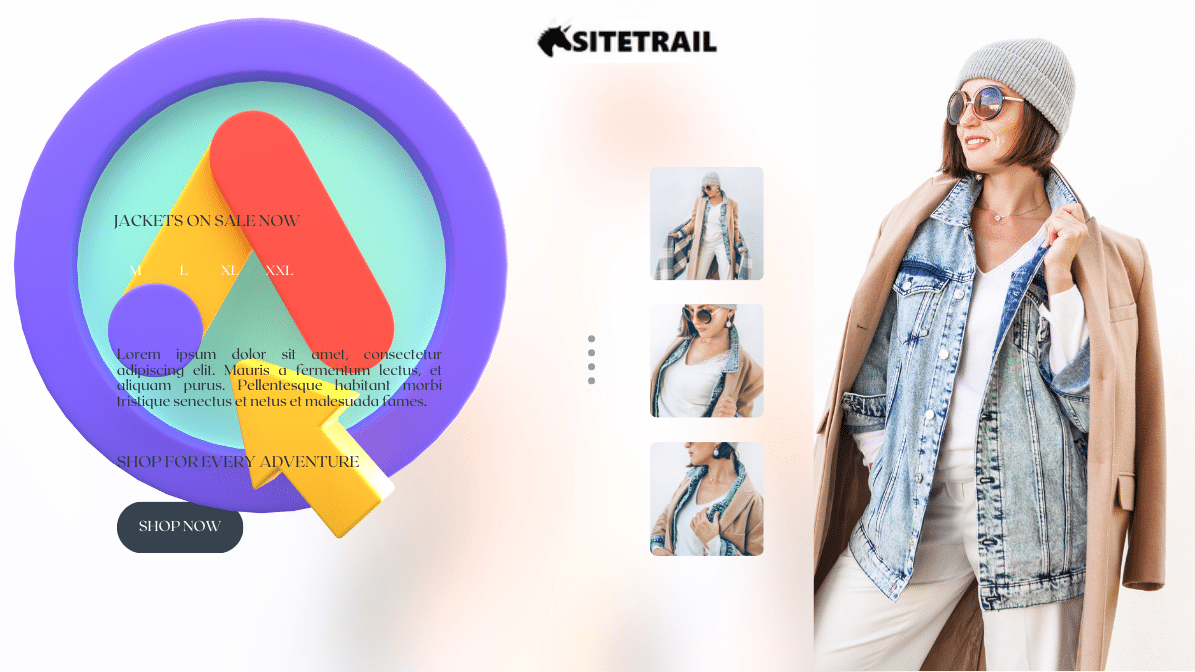
PPC marketing through Google Ads, Instagram, and Facebook offers targeted advertising options to reach potential customers based on their interests, behaviors, and search activities. For Google Ads, focus on keyword research to bid on terms your target audience is searching for. Craft compelling ad copy that speaks to their needs and preferences, and continuously optimize your campaigns based on performance data.
Instagram and Facebook ads allow you to showcase your fashion brand visually. Use high-quality images and videos to tell your brand’s story, highlight your products, and drive engagement. Segment your audience and use retargeting strategies to reach users who have shown interest in your brand, increasing the likelihood of conversion.
4. Email Marketing for Fashion Brands
Email marketing remains one of the most effective ways to directly engage with your audience. Build and segment your email list to deliver personalized content to different groups based on their preferences and behavior. Design emails that are visually appealing, easy to read on mobile devices, and aligned with your brand’s aesthetic. Include clear calls-to-action, such as shop now, learn more, or exclusive offers, to drive traffic to your website and boost sales.
5. B2B Marketing Strategies for Fashion Wholesalers
SUGGESTED: Linkdin Automation for B2B Wholesalers
For fashion wholesalers, LinkedIn offers a powerful platform for B2B lead generation and networking. Create a comprehensive LinkedIn profile for your business, showcasing your products, services, and unique value proposition. Share industry insights, product updates, and company news to engage with potential retail partners. Join LinkedIn groups related to fashion and wholesale to expand your network and discover new business opportunities.
Establishing valuable B2B partnerships requires a proactive approach. Attend industry events, participate in trade shows, and engage with potential partners on social media. Offer exclusive deals or collaborations to entice retailers to do business with you, focusing on building long-term relationships.
6. Influencer Collaborations
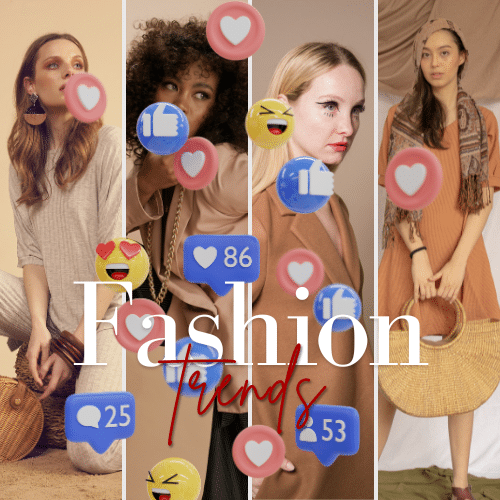 If there is one lesson in fashion marketing, it is that influencer collaborations can be invaluable provided that you see good engagement ratios VS the number of followers an influencer has. For examle: Sarah has 1M followers but 4 likes on a post, Jane has 50K followers and 400 liks. What does that say about the legitimacy or engagement of Sarah’s claimed follower levels – are these even real humans following her, or bot followers?
If there is one lesson in fashion marketing, it is that influencer collaborations can be invaluable provided that you see good engagement ratios VS the number of followers an influencer has. For examle: Sarah has 1M followers but 4 likes on a post, Jane has 50K followers and 400 liks. What does that say about the legitimacy or engagement of Sarah’s claimed follower levels – are these even real humans following her, or bot followers?
To harness this power, it’s crucial to partner with influencers whose brand values and aesthetic align with yours, ensuring their audience is your target demographic. Collaborative content creation should focus on authenticity, showcasing your products seamlessly within the influencer’s lifestyle. To gauge the success of these partnerships, closely monitor metrics such as engagement and conversion rates, along with return on investment (ROI). These insights help refine strategies for future campaigns, ensuring influencer marketing efforts yield substantial, measurable outcomes.
7. Event Marketing
Utilize fashion events, such as shows, pop-up shops, and exhibitions, to create immersive brand experiences. Plan your events meticulously, focusing on creating buzz through social media, influencer collaborations, and press coverage. Engage with attendees before, during, and after the event to maximize exposure and build lasting connections with your audience.
8. Commitment to Sustainability
In today’s market, sustainability and ethical practices are increasingly important to consumers. Make a commitment to sustainability a core part of your marketing strategy. Communicate your brand’s efforts in using sustainable materials, ethical labor practices, and reducing environmental impact. Highlight these initiatives in your marketing materials, website, and social media channels to connect with consumers who value sustainability, thereby building a loyal customer base committed to ethical fashion.
9. Customer Retention Strategies in Fashion Marketing
In the fast-paced world of fashion, where new trends emerge and fade with the changing seasons, customer retention stands as a beacon of sustainable growth and profitability. Retaining customers in the fashion industry is not just about repeat sales; it’s about nurturing long-term relationships that foster brand loyalty and create brand ambassadors who actively promote your products through word-of-mouth and social media. The value of customer retention cannot be overstated, as it significantly contributes to a brand’s resilience against market fluctuations and competitive pressures.
Why Customer Retention is Invaluable
- Cost Efficiency: Acquiring a new customer can cost five times more than retaining an existing one. Investing in retention strategies is not only more cost-effective but also maximizes the lifetime value of each customer.
- Increased Profitability: Loyal customers tend to spend more over time. As familiarity and trust grow, so does their willingness to invest in higher-priced items or explore new product lines, directly boosting the brand’s profitability.
- Feedback and Improvement: Regular customers are more likely to provide valuable feedback, offering insights into product quality, customer service experiences, and overall satisfaction. This feedback is crucial for continuous improvement and innovation.
- Brand Advocacy: Satisfied customers become brand advocates, recommending your fashion brand to friends, family, and followers. This organic form of marketing is incredibly effective and lends authenticity to your brand.
- Market Stability: A loyal customer base provides stability in an unpredictable market. During downturns or seasonal lulls, having a core group of loyal customers can sustain a brand’s revenue and market presence.
Strategies for Enhancing Customer Retention
- Personalized Experiences: Utilize customer data to offer personalized shopping experiences, tailored recommendations, and custom promotions. Personalization makes customers feel valued and understood, increasing their loyalty to the brand.
- Quality Customer Service: Exceptional customer service is pivotal. Ensure that your customer service team is responsive, empathetic, and empowered to solve issues promptly. A positive service experience can turn a potential issue into a loyalty-building opportunity.
- Loyalty Programs: Implement loyalty programs that reward repeat purchases, referrals, and social media engagement. These programs not only incentivize repeat business but also deepen the customer’s emotional connection to the brand.
- Exclusive Offers: Provide regular customers with exclusive access to sales, previews of new collections, and special events. This exclusivity enhances the customer’s sense of belonging to a privileged community.
- Engaging Content: Keep your audience engaged with high-quality content that goes beyond product promotion. Share stories behind your collections, sustainability efforts, and style inspiration to keep your brand top of mind and relevant.
Conclusion and next steps:
As we conclude our guide on fashion marketing, it’s essential to revisit the core aspects that make this field unique and dynamic:
What is Fashion Marketing?
Fashion marketing is the strategic promotion of fashion brands and products to connect with potential customers. It involves a blend of creative and business tactics to build brand awareness, stimulate interest, and drive sales in the competitive fashion industry.
What does a Fashion Marketer do?
A fashion marketer crafts and implements marketing strategies that align with a brand’s identity and target market’s preferences. This includes market research, advertising, social media management, event planning, and collaboration with designers and sales teams to ensure a cohesive brand message and aesthetic.
What makes a good Fashion Marketer?
A proficient fashion marketer possesses a deep understanding of the fashion industry’s trends and consumer behavior. Creativity, strategic thinking, excellent communication skills, and the ability to adapt to rapidly changing market dynamics are crucial. A successful marketer also leverages digital marketing tools and platforms effectively, from SEO and PPC to social media and beyond, to engage audiences and build lasting relationships with customers.
By embracing these roles and qualities, fashion marketers play a pivotal role in navigating brands through the complex and vibrant landscape of the fashion industry, ensuring not just visibility but also a deep, enduring connection with their audience. Ultimately – those who put their mind to figuring out immersive fashion marketing in the metaverse, may just crack the code on addictive marketing with a lower ROI, so watch this space.


